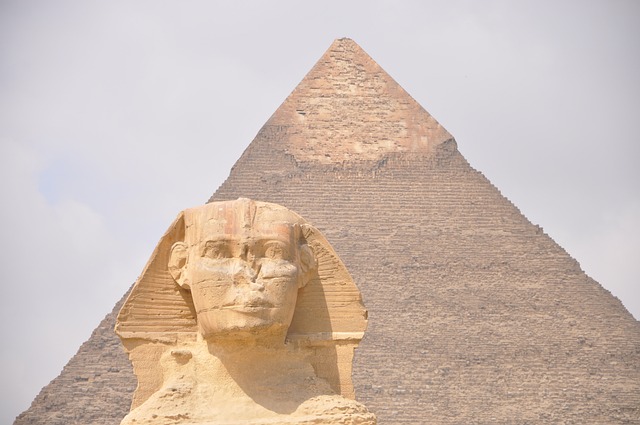Central to any terrorist organization’s capacity for operationalization is its ability to draw recruits and public support. Hamas has gained international sympathy with every move Israel made since the October 7th attacks. The strategic architecture served by Hamas’s violence is a weaponized narrative that aims to gain international support, fuel radicalization, draw support away from Israel, and legitimize the terror group as a form of governance.
Hamas’s narrative strategy must be undermined, overwhelmed, or enveloped.
The identities of potential recruits are being targeted by enlisting the particularly effective narrative technique of “re-framing” or providing alternative meaning to events by contextualizing them as a part of a larger cultural and historical narrative, where they don’t belong, but with which the target audience identifies.
By invoking the foundational narrative of the Battle of the Trench that occurred in 626 AD, Hamas is positioning its attack in the context of a history of fighting on behalf of Muslim nations against the forces of injustice and tyranny that the pivotal event in early Islamic history represented. Hamas wants to portray itself as continuing the legacy of Prophet Muhammad’s struggle against the disbelievers and Jewish tribes and fighting for the liberation and dignity of the Palestinian people.
A pivotal event in early Islamic history, the Battle earned its name from a strategic defense tactic suggested by Salman the Persian, who advised Muslims to dig a trench around Al-Madinah al-Munawwarah located in Saudi Arabia. Faced with the impending threat of a confederation of Kuffar (polytheists) and Jews, Muslims fortified the city’s defenses by digging a trench around Al-Madinah al-Munawwarah, making it challenging for enemy forces to breach.
Battle of the Trench is being referenced as context to to October 7th attack in order to inspire and mobilize support for their cause and posit Hamas gangsters as defenders of the faithful. In this way Hamas taps into a deep reservoir of religious sentiment to manipulate the construction of a strong jihadist identity.
Among the audiences that the group most wants to reach (Palestinians in Gaza and the West Bank, Arab populations throughout the region, and young people in the West) the October 7 attacks have receded from view, replaced by images that support the Hamas narrative, in which Israel is the criminal aggressor and Hamas is the defender of innocent Palestinians.
We predict that Egypt will be the next target and that future attacks may be facilitated by The Muslim Brotherhood. Currently, Brotherhood media is repeatedly citing the date 1840 which not only triggers the sense of injustice and anger against the West, but moreover, it provides, in advance, the context into which proceeding events will be viewed by the target audience.
The media citations repeatedly referencing 1840 are predictive because any effective narrative strategy will go out in front of physical action in order to frame the actions that will follow.
The context (the narrative frame) being referenced is The London Treaty, concluded in 1840, between the Ottoman Empire and four European powers—the Russian Empire, Prussia, the United Kingdom, and the Austrian Empire—to curb the territorial expansions of Muhammad Ali Pasha, the ruler of Egypt, at the expense of the Ottoman Empire. This treaty also resulted in reducing his powers and the defeat of his project of reviving the Ottoman Empire’s hegemony.
The Muslim Brotherhood views this treaty as the event that opened the gate for The Balfour Declaration. In a statement issued in 1917 by the British Foreign Secretary in the government of the United Kingdom at that time, Arthur Balfour, Britain declared its support for the establishment of a “national home for the Jewish people” in Palestine.
The historical grievances against colonial powers have deeply embedded themselves within the collective identity of Egyptians. The prolonged resentment and perceived injustices endured by the populace serve as a cornerstone for a shared identity rooted in resistance and the aspiration for self-determination. The Muslim Brotherhood has adeptly woven these grievances into their narrative, portraying their struggle as a continuation of a historical quest for justice and autonomy. This narrative not only reinforces group identity but also fosters solidarity among those who feel marginalized.
Regional tensions, particularly concerning perceived injustices by external powers such as Britain, Israel, and the United States, further solidify a collective identity among Egyptians. This identity is often defined in opposition to these external actors, unifying the populace against common adversaries. The Muslim Brotherhood attempts to capitalize on this shared identity to mobilize support and further its agenda, utilizing the concept of ‘ Hijra to Jihad ‘ as a rallying point. By invoking historical grievances and aspirations dating back to events like those in 1840, the Brotherhood attempts to revitalize the Islamic Ummah project and galvanize supporters around its vision for change.
The Muslim Brotherhood referres to Hamas soldiers (the Tunnel Youths) in parallel to the Quranic Surah Al-Kahf (18:13): “It is We who relate to you, [O Muhammad], their story in truth. Indeed, they were youths who believed in their Lord, and We increased them in guidance.” This can be perceived among young Muslim generations as a sign from Allah, signaling victory. The deep meaning of this Quranic text implies an abridged explanation of the Quran: “I am informing you, O Messenger, of their affair, truthfully without any doubt. Surely, they were youngsters who believed in their Lord and obeyed Him, and I increased them in guidance and firmness on the truth.” Bridging the past and present, these groups utilize all narrative and visual tools in Islamic texts to construct a new narrative of jihad.
Egypt’s aspirations to maintain its leadership role in the Arab world face challenges. The convergence of historical grievances, regional tensions, the current political and economic situation, and geopolitical ambitions creates a volatile environment in Egypt. The ideology of Jihad Hijra within the Muslim Brotherhood could find fertile ground in this context, potentially leading to significant mobilization and upheaval as various actors seek to capitalize on prevailing discontent and regional dynamics.



